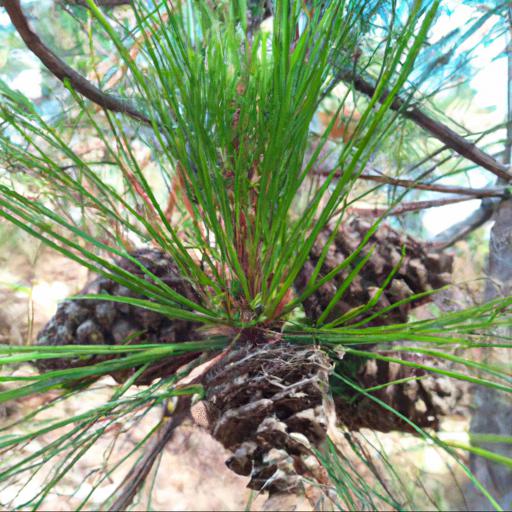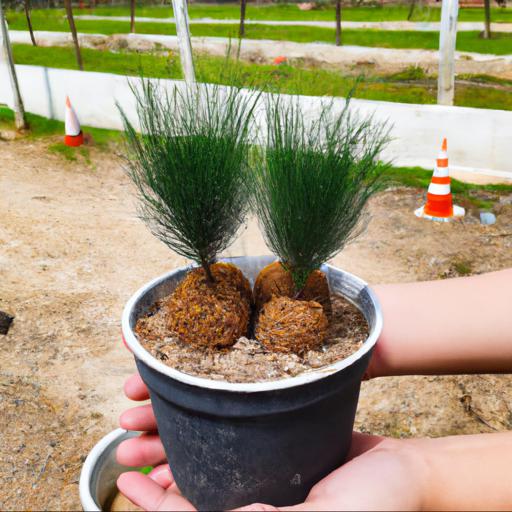Pinus pumila winton, commonly known as the Winton Siberian Dwarf Pine, is an evergreen conifer species native to the mountains of Siberia. It is one of the smallest species of pine trees and has a slow growth rate, making it a popular choice for bonsai and rock gardens.
The foliage of the Winton Siberian Dwarf Pine is a dark green color and has a neat and compact growth habit. The needles are short and sharp, and the cones are small and brown in color. The Winton Siberian Dwarf Pine is a hardy species that can tolerate a wide range of temperatures and conditions and is very low maintenance.
It is a great choice for those looking for a unique and attractive evergreen conifer to add to their landscape.
Characteristics of pinus pumila winton
Pinus pumila Winton is an evergreen shrub of the Pine family that is native to cold climates. Its botanical name is derived from the Latin word for “small” as it seldom exceeds two meters in height. Its needles are very small and yellowish-green in color.
The bark can range from gray to orange-brown. Pinus pumila Winton is a hardy shrub that can withstand temperatures as low as -40°C.
Its shallow root system is well suited for rocky soils, meaning it often grows on mountain slopes, scree and scree-slopes, and other rocky terrain. It is also suitable for hedges, gardens and windbreaks, and even as bonsai.
Pinus pumila Winton has distinctive reproductive characteristics. It drops its cones when they are fully mature, meaning seed dispersal is spread over a longer period of time than other species. This can be beneficial in harsh or challenging climates where other species may be less successful.
Additionally, its cones remain closed until further ripening takes place, protecting its seeds from the harsh conditions and assisting in its reproduction. Overall, Pinus pumila Winton is a resilient and versatile species.
Its attractive colour and size make it a great choice for rockeries and gardens, as well as for windbreaks, providing a practical and decorative alternative to other pines species. This evergreen is low-maintenance and suitable for many regions, making it a highly desirable ornamental shrub.
Benefits of pinus pumila winton

Pinus pumila Winton, an evergreen shrub from the genus Pinus, typically found in Eastern Europe and parts of Asia, is a popular species for gardens around the world. Often used for bonsai, as an ornamental for rock gardens, or for ground cover, this hardy and attractive shrub has many benefits for gardeners. In terms of its look, the Pinus pumila Winton has a unique, visual appeal.
Its small, silver-green needles are arranged in bundles of five and form unique, swirling mounds that are visually appealing and add a unique dimension to any garden. In addition, this species of shrub is hardy and can withstand colder climates and harsher wind conditions.
When given enough sunlight, this shrub will produce an abundance of flowers in spring, which can add to the beauty of a garden. The Pinus pumila Winton is also popular due to its low maintenance needs.
It requires very little in terms of pruning or fertilizers, with just the occasional trimming and pruning to keep it healthy and looking its best. This shrub is also briefly resistant to pests and disease, making it a great choice for those who do not wish to use a lot of chemicals. In sum, the Pinus pumila Winton is a great addition to any garden.
Its unique and attractive look, as well as its low maintenance and strong resistance to pests and disease, makes it an ideal choice for gardeners looking to add a subtle and attractive feature to their outdoor living space.
How to grow pinus pumila winton

Pinus pumila “Winton”, also known as the Winton’s Stone Pine, is one of the most popular pine varieties found in UK gardens. Native to the Andes Mountains in Peru, this evergreen conifer grows quickly and easily, and is low-maintenance and highly ornamental, making it ideal for private gardens, public parks, and commercial use.
It has a pyramidal form and prefers full sun, growing to a maximum height of around 40 feet with a spread of 15 feet. It needs to be given good drainage and planted in acidic soil. It should also be pruned regularly to maintain a neat form and encourage new growth.
As it is salt tolerant, it is an ideal choice for coastal gardens. Pinus pumila “Winton” produces beautiful yellow-green to green foliage and distinctively glossy, elegant cones in shades of blue, making it an attractive choice for any garden setting. It is very hardy and fairly pest and disease resistant.
Furthermore, it produces significant amounts of oxygen, making it exceptionally valuable to the environment. All in all, Pinus pumila “Winton” is an ideal choice of evergreen conifer for many gardens.
Conclusion
Pinus pumila Winton is a species of pine tree native to northern Asia. It is a small, evergreen tree that grows to a height of 5-15 meters.
Its needles are dark green, and it produces small, yellow-brown cones. It is tolerant of cold temperatures and can survive in harsh climates. Pinus pumila Winton is often used as an ornamental tree for its attractive appearance and hardiness.
It is also used for timber production and windbreaks.
FAQ
What is the scientific name of Pinus pumila Winton?
The scientific name of Pinus pumila Winton is Pinus pumila var. pumila.
Where is Pinus pumila Winton natively found?
Pinus pumila Winton is natively found in the mountains of eastern Siberia and northern Mongolia.
What are the characteristics of Pinus pumila Winton?
Pinus pumila Winton is a dwarf shrub pine native to North America. It is a slow-growing evergreen conifer with a dense, compact habit and a rounded form. Its needles are short, dark green, and arranged in bundles of two. Its cones are small and oval-shaped, with a yellowish-brown color. It is tolerant of cold temperatures and prefers moist, well-drained soils.
How is Pinus pumila Winton used?
Pinus pumila Winton is used as an ornamental plant for landscaping, as well as for erosion control on slopes and in windbreaks.
What are the benefits of planting Pinus pumila Winton?
The benefits of planting Pinus pumila Winton include providing habitat for wildlife, reducing soil erosion, and providing a source of timber. Additionally, Pinus pumila Winton is a fast-growing evergreen conifer, making it a great choice for windbreaks and privacy screens.
What are the potential threats to Pinus pumila Winton?
The potential threats to Pinus pumila Winton include habitat destruction, climate change, and competition from invasive species.
